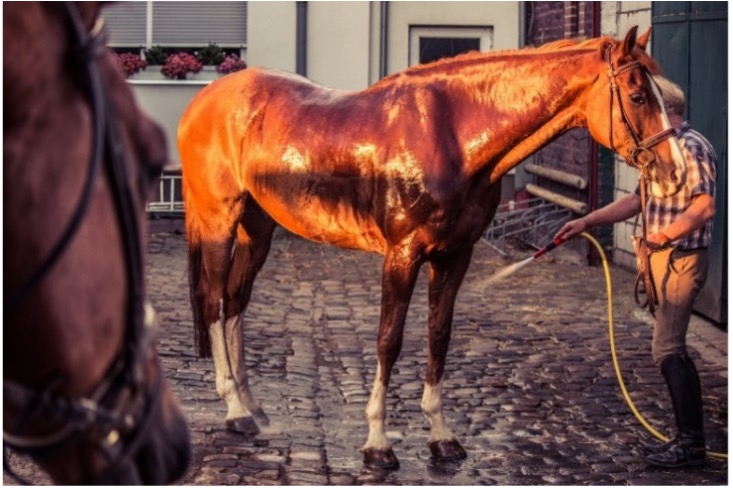Lisa Klous, Esther Siegers, Jan van den Broek, Mireille Folkerts, Nicola Gerrett , Marianne Sloet van Oldruitenborgh-Oosterbaan, and Carolien Munsters (2020). Animals, 10(9), 1664. https://doi.org/10.3390/ani10091664
The high muscle mass and small surface area for heat dissipation of horses lead to increased risk of overheating in horses. In hot or humid conditions, they struggle to cool down effectively through sweating. To safely perform exercise in challenging environmental conditions, it is beneficial to assist the horse by active cooling. Cooling can also be provided prior to exercise (pre-cooling) to increase the margin for heat storage by decreasing pre-exercise core and skin temperatures. This study aimed to assess the impact of pre-cooling on heart rate, core and skin temperatures, sweat rate, and electrolyte loss in horses during exercise.
Ten international Warmblood eventing horses (CCI1*-CCI5* level) in full training underwent a moderate intensity canter training on two separate days (with two days in between) in July 2019 in the Netherlands. They performed the same moderate intensity canter training on two separate days and were pre-cooled during one training and not (control) during the other. Heart rate, body temperature, sweat loss, and sweat composition were measured during the sessions, and blood samples were taken from the jugular vein after the last canter and again after 10 min of recovery.

Understanding the individual responses to pre-cooling is important for optimising welfare, and possibly improving performance during training and competition in challenging environmental conditions.